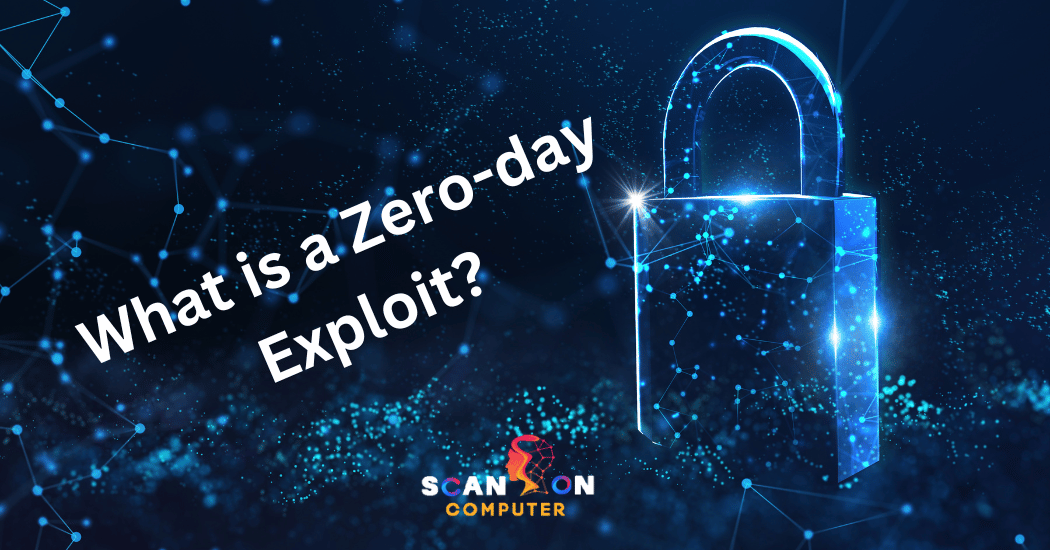As soon as a zero-day vulnerability is identified, security professionals work on developing solutions and software vendors release patches; however, malicious actors often take advantage of this gap between when the vulnerability was first known about and when patches become available.
Zero-day attacks are difficult to identify due to traditional detection systems relying on threat signatures to recognize malware, yet zero-day attacks don’t have a distinct fingerprint that makes them easy to spot.
What is a Zero-day Exploit?
Zero-day attacks exploit vulnerabilities in software to enable bad actors to gain entry and steal information or take over devices. Hackers usually discover these flaws months or years before developers release patches to fix them.
Stuxnet was perhaps the most infamous example of a zero day attack, leading Iranian uranium centrifuges to self-destruct and becoming inoperable. This malware attack is widely believed to be associated with nation states and remains one of the most damaging cyberattacks ever.
Zero-day threats are actually preventable. One key way of protecting devices against zero-day vulnerabilities is keeping antivirus software and operating systems up-to-date; many may disregard notifications about system updates; however, these notifications often include security patches to fix software gaps before attackers exploit them. Organizations can strengthen their cybersecurity by keeping external threat intelligence feeds updated – this helps them see their networks from an attacker’s point of view and identify any newly emerging zero-day vulnerabilities more quickly.
The zero-day lifecycle
Hackers that discover zero-day vulnerabilities often utilize exploits to gain entry to your system and commit fraud. Sometimes the hacker discovering it (known as a “threat actor”), while other times they purchase information through dark web markets or black markets.
Once a vulnerability has been discovered, software developers must work rapidly to implement a patch solution and distribute it among all software users; however, this process could take days or even months.
Attackers may try to exploit zero-day attacks by sending socially engineered emails that convince recipients to visit malicious websites or download malware that infiltrates your systems and steals data. To minimize risk, be sure to have a security platform with real-time visibility that applies micro-segmentation, least privilege and micro-segmentation policies to detect attacks as soon as they arise, plus implement threat intelligence, anomaly detection and backups as safeguards against zero-day attacks.
Examples of zero-day attacks
Hackers exploit zero-day vulnerabilities to weaponize malware and gain unauthorized access to critical systems. Their attacks range from sending simple phishing emails to damaging operations, stealing data or exposing confidential information.
Researchers or ethical hackers (white hats) who discover software flaws must promptly notify the vendor in order to provide a fix before criminal hackers take advantage of it. Otherwise, all bets are off.
Bad actors abuse software to discover vulnerabilities, then exploit those flaws through attack before the developer can release a patch to fix it. They then sell zero-day exploits on the Dark Web or target specific entities for cyberwarfare, hacktivism or corporate espionage purposes. Once an attacker gains entry to your network they can steal sensitive data or even take control of computers – to safeguard themselves against these types of attacks organizations should implement microsegmentation and least privilege across their environments to mitigate the risks posed by hackers and attackers alike.
Stuxnet
Stuxnet was widely considered the world’s first cyber weapon. It slipped into Iran’s systems that controlled their uranium-enrichment centrifuges, modifying their settings so as to speed them up or slow them down in ways which caused irreparable damage, impairing their capacity for isotope separation for nuclear power plants and weapons production.
No one has officially claimed responsibility for creating or sponsoring this worm; however, most believe the US and Israel were behind its creation and dissemination. Due to its size and sophistication, this malware was the first ever known to physically damage equipment in real life.
Stuxnet exploited multiple zero-day vulnerabilities during its creation. It spread via USB drives and infected unprotected machines if users inserted them in unprotected machines; specifically targeting Siemens S7 PLCs commonly found in industrial control systems with four vulnerabilities exploited – two elevation of privilege flaws among them that Microsoft released patches for, yet remain unpatched today.
Log4Shell
Log4Shell is an internet vulnerability exploited by hackers to steal data, spread ransomware and gain control over computers. The vulnerability affects Log4J logging software used by millions of applications ranging from popular games such as Minecraft to cloud services like Apple iCloud; as well as software development tools and various security products.
Log4J versions prior to 6.2 suffer from a critical vulnerability related to how they handle Java Naming and Directory Interface (JNDI) lookups, giving hackers an avenue for sending JNDI lookup requests that induce programs into downloading malicious code – this allows hackers to then use this code for whatever malicious purposes.
Cynet customers must ensure their next-generation firewalls, web application firewalls and intrusion prevention systems are updated with the most up-to-date rules and signatures to safeguard themselves against this threat. Klocwork can assist in monitoring code that contains corrupted data coding to detect this issue (CVE-2021-4428) more efficiently – please refer to our documentation for more details regarding this feature.
2022 Chrome attacks
Google recently issued an emergency Chrome update to address a zero-day vulnerability being exploited by hackers. The fix targeted CVE-2022-4262, a type confusion flaw in V8 JavaScript engine that could allow an attacker to execute code, install programs, view or change data, delete information or create accounts with full user rights on victim systems.
Google acknowledged on its Chrome Release Blog that an exploit for a flaw exists and is being actively exploited in the wild, impacting billions of Chrome users worldwide across Windows, Mac and Linux operating systems.
Google usually delays providing details on zero-day vulnerabilities until most of its userbase has updated, to limit hackers’ exposure and reduce memory-bleed attacks that could expose sensitive user information to attackers.
Preventing Zero-Day Exploits and Attacks
Zero day attacks begin when hackers discover and exploit software vulnerabilities within a piece of software, creating malware they use for identity theft or to gain access to confidential data.
Although zero-day attacks cannot always be stopped, maintaining high standards of cybersecurity hygiene can help. This includes patch management, vulnerability scanning and anomaly-based detection methods.
1. Patch management
An effective patch management process can help protect organizations against zero-day attacks. This involves conducting an inventory of both hardware and software to enable security teams to prioritize essential patches while remaining compliant with regulations like GDPR, HIPAA and PCI-DSS.
Once a new patch is available, it should be thoroughly tested in a lab environment before being deployed to production systems. A test run can help detect any hidden problems which might have slipped past initial testing stage.
Scheduling patching appropriately is also essential to business operations, avoiding interference with day-to-day business functions. For instance, when there are multiple policy groups to implement at once it may be beneficial to run lower priority groups first and then higher-priority ones sequentially – this minimizes time each group spends active while decreasing risks of unintended outcomes.
2. Vulnerability management
Vulnerability management refers to the practice of identifying, documenting, prioritizing and remediating software flaws that hackers could exploit. This process should take place regularly across all systems and applications used by employees as part of an overall risk mitigation strategy.
Threat actors are continually looking for opportunities to exploit your company’s vulnerabilities and gain entry to your data before it can be protected by security firms. Zero-day attacks often go undetected for months before being patched – leaving your information vulnerable until discovered and patched.
As the initial step, you should conduct a scan to identify any vulnerabilities within your systems and assess them based on severity and risk ratings derived from impact assessment of each vulnerability on your business. After this has been accomplished, each one can be treated in various ways such as full remediation, mitigating it or accepting it if risk levels dictate too much action being taken against it.
3. Attack surface management ASM
Attack Surface Management (ASM) allows security teams to proactively identify risks, assess vulnerabilities and strengthen defenses by giving them an overall view. ASM allows them to proactively detect threats like zero-day attacks as well as other types of cyber threats by helping them understand all aspects of an organization’s attack surface.
An attack surface management solution automatically discovers, inventories and continuously monitors an organization’s internal and external IT assets for vulnerabilities. This includes assets on-premises, in the cloud and subsidiary networks as well as any rogue IT (unauthorized or previously used hardware, software, data or practices) or shadow IT that resides in development repositories, public websites or rogue servers.
Once the discovery process is completed, ASM tools help security teams devise a strategy for mitigating risks. This may include installing remediation controls, updating IT policies and retiring orphaned IT securely while scanning third-party assets for risks – measures designed to close vulnerabilities faster than attackers can exploit them.
4. Threat intelligence feeds
Threat intelligence feeds are an integral component of any effective cybersecurity solution, providing real-time streams of data about threats as they emerge and allowing security professionals to respond swiftly. Threat intelligence also keeps organizations ahead of digital adversaries who constantly search for ways to breach cyber defenses.
These feeds can either come as human-readable reports or formatted streams of data that can be directly imported into security systems, making for greater context and useful insights. Furthermore, they can even be integrated with other cybersecurity tools for additional insight.
The best threat intelligence feeds provide information about how attacks work and the techniques, tactics and procedures (TTPs) used by hackers to breach networks. They also include lists of known malware, malicious URLs and CDNs used by attackers – some feeds update near-real time while others offer daily reports.
5. Anomaly-based detection methods
An ability to detect anomalous data is a fundamental security measure. Recognizing irregular patterns or events can thwart attackers from taking advantage of zero-day vulnerabilities. Anomaly detection can be accomplished using signature-based monitoring, behavior-based monitoring or machine learning algorithms – with each of these approaches creating a model or baseline of what constitutes normal data behavior that new information will be compared against.
Once vulnerabilities are exposed, hackers use them to gain entry to systems and steal or manipulate data. Cybercriminals exploit such vulnerabilities for financial gain; state-sponsored hackers use cyberattacks against nation-state cyberinfrastructure to achieve political goals; while hacktivists may exploit zero-day vulnerabilities for social or political causes.
Zero-day attacks cannot be completely prevented, but measures exist that can mitigate their risk. Vulnerability scanning and patch management are two approaches often taken to prevent zero-day attacks; however, these approaches don’t cover every type of threat.
Conclusion
Software developers typically develop patches to address discovered vulnerabilities and include it in future releases of their software, but this process takes time. Meanwhile, hackers may take advantage of exploiting flaws to launch attacks against businesses and utilize zero day exploits to take over systems and steal sensitive information.
Vulnerability scanning solutions and quickly applying patches can help protect against zero-day attacks by quickly closing known vulnerabilities; however, these are only partial solutions which cannot eliminate all zero-days.
Businesses looking to guard against zero-day attacks must utilize multiple layers of defenses, including regular vulnerability scans, swift patch deployment and strong security protocols that keep hackers away from crucial systems. Furthermore, threat intelligence feeds and anomaly-based detection can help businesses detect suspicious activities quickly to thwart zero-day attacks and protect critical assets.











Leave a Reply
View Comments